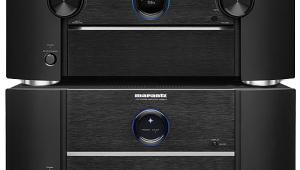I'm looking forward to reading this article about how to write a special occasions essay. It's always challenging to write the perfect speech for a special event and I'm sure this article will provide some great tips.
To Separate or Not to Separate?
Simplicity, where have you gone? Let's be realistic for a moment: This little home theater hobby of ours, circa 2001, is usually confusing, occasionally mind-boggling, and flat-out intimidating to the uninitiated. Do we love it any less as a result? We certainly shouldn't. While we should always expect the equipment manufacturers and software providers to make things as simple as they can, the bottom line is that, in the A/V realm, confusion is often only a temporary state, brought about by increased opportunity, quality, and flexibility. These are confusing days because they are evolutionary (and occasionally revolutionary) ones. Granted, it may not be easy to get a grasp on several new soundtrack-processing formats, two entirely new audio formats, new video formats and technologies, and a radical overhaul of our television system—all at the same time. However, if you can't see some good in all of this (and if you don't find it all to be at least as exciting as it is perplexing), maybe you'd better find a new hobby.

Confusion in our world is hardly limited to new formats and technologies. The steady progression of older technologies (relatively speaking) presents its own questions and conundrums—including one that's put to us as much as, if not more than, any other: Should I buy a receiver or separates? The answer doesn't come quite as quickly as it used to, now that the formerly distinct line between the top of the receiver market and the bottom of the separates market has become increasingly blurry. Naturally, there's no generic, one-size-fits-all answer. The final decision about anything you bring into your audio/ video system should ultimately hinge on you—your ear, your budget, and your system and space restraints. Over the next couple of pages, though, I'll dig into some of the issues that surround these varying approaches to power-and-control technology and hopefully shed some light on the strengths and weaknesses of each option so that you can tackle this most philosophical of home theater enigmas for yourself.
Assuming that some of you may fall into the aforementioned "uninitiated" category, a brief smattering of the basics is probably in order. An A/V receiver is usually made up of at least four main components (preamplifier, amplifier, surround processor, and tuner) in a single chassis. Virtually all of today's receivers are multichannel designs in either a five- or seven-channel deployment and offer at least Dolby Pro Logic processing, although Dolby Digital is standard on almost every current model. A separates system, as the name implies, is a control-and-power subsystem in which the main components are housed in two or more units. This configuration always includes the physical separation of the power elements from the processing and control elements. Naturally, you can get as elaborate as you want with separates. You could have a separate preamp, volume control, surround processor, and tuner, plus several power amps and digital-to-analog converters, that would accomplish the same primary tasks as a one-box A/V receiver. However, most home theaters that employ separates consist of a preamplifier/ processor (a single box that offers just about everything but power) and either a single multichannel amplifier or a combination of monoblock and/or multichannel amplifiers to suit your power needs.
 Once you've set your system on course by selecting speakers, power is your primary concern. And, of course, power issues lie at the very core of the receivers-versus-separates debate. One of the great A/V myths that exists even to this day is the notion that power-output specifications tell us what we need to know about an amplifier's capabilities. In fact, the more-generic but widely used ratings tell us very little about an amplifier and are usually far more misleading than they are informative.
Once you've set your system on course by selecting speakers, power is your primary concern. And, of course, power issues lie at the very core of the receivers-versus-separates debate. One of the great A/V myths that exists even to this day is the notion that power-output specifications tell us what we need to know about an amplifier's capabilities. In fact, the more-generic but widely used ratings tell us very little about an amplifier and are usually far more misleading than they are informative.
As an example, let's look at a basic power spec of 100 watts times five channels into 8 ohms. Even on the surface, this technical statement can be misleading. The channel number is included simply to let us know how many channels the amplifier has. Unless otherwise specified, the power rating of 100 watts is likely measured with only one or two channels firing, even if it's a multichannel amplifier. The amp may or may not be able to deliver that much power with all five channels being driven simultaneously, which is how it will obviously operate most of the time in a home theater system. Another basic concern is whether or not that 100-watt spec is a continuous power rating (aka RMS) or a peak power rating. This particular aspect of spec trickery has finally been brought more under control, but make sure you read the spec sheet carefully. An amp that can deliver 100 watts during short peaks is far different than an amp that delivers 100 watts continuously.
- Log in or register to post comments


















































